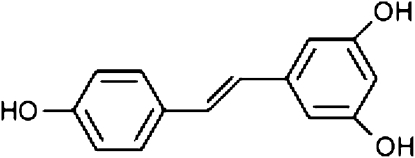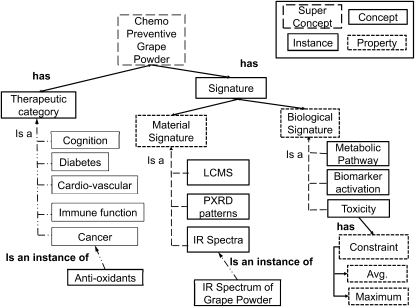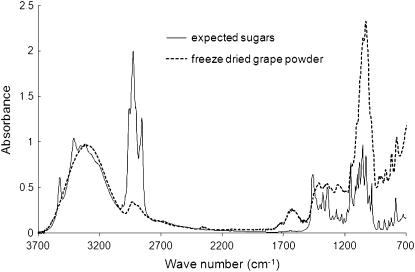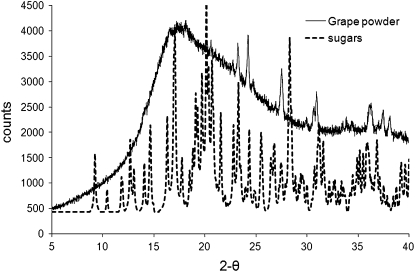Abstract
As described in this Supplement and elsewhere, consumption of grapes or grape products has been associated with various health benefits. Resveratrol is a unique component of grapes. Following our report on potential cancer chemopreventive activity, thousands of studies have been performed to characterize the mode of action of this substance. Nonetheless, scores of additional chemicals are known to be constituents of grapes, several of which are capable of mediating biological responses. Accordingly, when considering grapes and health, a holistic view appears to be more meaningful, taking into account all chemical components, metabolism, biological potential, biodistribution, absorption, processing, etc. To fathom such a massive amount of information, we propose the creation of focused ontologies. Grapes seem reasonable as a test bed for exploring this approach, especially because a fair amount of results are available with whole-grape powder. In essence, by utilizing a next generation intelligent system, attempts can be made to leverage the existing complexity. This approach involves bringing together all available information, together with expert judgment, and processing this information through a computational “engine” or engines to provide suggested solutions (or implicit functional relationships). Accomplishment of this task, employing grapes as a prototype, could lead to broader application by incorporating the myriad of features associated with other fruits and vegetables. The ability to correlate heretofore-uncharacterized “signatures” with biologic outcome could fundamentally transform copious amounts of disparate information into a coherent explanation of human disease prevention.
Introduction
It is perhaps intuitive that “A man may esteem himself happy when that which is his food is also his medicine (1).” From a less ethereal vantage point, a large number of epidemiological observations have established links between diet and disease prevention, and systematic investigations continue to explore the scientific validity or foundation of such properties. Fruits, vegetables, herbs, and spices, of course, comprise the mainstay of this work and present a plethora of opportunities for discovery. Occasionally, it makes sense to stand back and take the long view, to take stock of a large and divergent body of accumulating evidence. Such a process was undertaken during the period of December 2–3, 2008, in San Francisco, when the National Grape and Wine Initiative (NGWI) brought together a group of scientists with specific interest in grape health. The NGWI is a nationwide coalition of grape and grape products sectors representing grape growers, processors, wineries, and representatives of academic institutions and cooperative extension organizations committed to improving the industry.
As summarized recently (2), the potential of grapes to modulate a large number of biological effects is under investigation. Although the majority of studies have been performed to investigate cardiovascular activities, many other types of responses are conceivable. This was the first Grape Health Workshop sponsored by NGWI. As presented in the following papers, 7 key areas of emphasis were selected for discussion: cardiovascular, diabetes/glycemic response, immune function, cancer, cognitive function/brain health, antimicrobial/antiadhesion, and bioavailability/analytical.
A synopsis of the symposium proceedings follows. Dohadwala and Vita (3) reviewed epidemiological studies suggesting consumption of wine, grape products, and other foods containing polyphenols is associated with decreased risk for cardiovascular disease. Potential mechanisms are described and it was concluded that diets rich in fruits and vegetables, including grapes, can decrease the risk for cardiovascular disease (3). Next, Zunino (4) described the concepts of glycemic index and glycemic load and concluded that grapes or grape products may provide health benefits for type 2 diabetics. In considering potential effects on immune function, Percival (5) acknowledged little is known about the situation with human beings but described an ongoing study showing Concord grape juice supported circulating γδ T cells and maintained immune function in participants, whereas those on the placebo juice had changes associated with reduced immunity (5). As reviewed by Kaur et al. (6), cancer chemoprevention is a promising strategy for controlling human malignancies, and fruits and vegetables, including grapes, have been studied in this capacity. In particular, grape seed extract has been investigated with promising results and current data suggest grape-based products are reasonable sources of anticancer agents and regular consumption should be beneficial for the general population. This was followed by the interesting work of Joseph et al. (7) emphasizing the antioxidant potential of fruits and vegetables, including grapes. Greater dietary intake of high antioxidant foods has been associated with fewer age-related diseases such as Alzheimer's disease and enhanced cognitive and motor function in aging. Illustrating the scope of responses that may be facilitated by dietary phytochemicals, Wu (8) reviewed the potential of grape products to modulate oral and dental health. Antimicrobial activities and effects on plaque pH are of importance. Grape seed extract, high in proanthocyanidins, positively affected the in vitro demineralization and/or remineralization processes of artificial root carrie lesions and raisins appear to be a healthy alternative to commonly consumed sugary snack foods. Finally, Forester and Waterhouse (9) summarized the classes of phenolic compounds associated with grapes and wine, bioavailability, metabolism, and analytical methodology to study these factors.
Overall, the proceedings of this symposium illustrate the broad scope of action that is potentially facilitated by grapes and grape products. Clinical observations with human beings are complicated, but analysis of existing data appears promising. The intention of this introductory paper is to discuss the complexity associated with attempting to pinpoint the mechanism of grape action. Indeed, there is a crisis of complexity, but some evolving tools may help to lead us through the labyrinth.
The reductionist approach: resveratrol and grapes
All fruits and vegetables contain a variety of phytochemicals, many of which are ubiquitous and common. Resveratrol (Fig. 1), a simple stilbene, is less common in dietary materials, with a key source being grapes and grape products. Incredibly, following our report of potential cancer chemopreventive activity (10), nearly 2000 reports have appeared in the literature. In addition to an extensive literature on cancer-related activities (11), a diverse array of responses has been reported. For example, the potential of resveratrol to function as an antibacterial, antifungal, antiviral, cardioprotective, neuroprotective, antiproliferative, antiangiogenesis, and antiinflammatory agent has been reported (12). Modes of action, such as modulation of signal transduction, transcription factors, prostaglandin synthesis, and antioxidant action are also extensive and diverse (12). But are any of these actions actually mediated by resveratrol itself?
FIGURE 1 .
Structure of resveratrol (trans-3,4′,5-trihydroxystilbene).
It is known that resveratrol is rapidly absorbed, but serum levels are low (e.g. 0.1–0.5 μmol/L). On the other hand, metabolites such as resveratrol-3- and 4′-sulfate and resveratrol-3-glucuronide are generated and may be present at higher serum concentrations (e.g. 2–10 μmol/L). Accordingly, it is obligatory to investigate the biological activity of resveratrol metabolites, because any response may in fact be attributed to these species. As an example, we have observed inhibition of cyclooxygenase-2 by resveratrol with an IC50 (concentration required to reduce activity by 50%) value of ∼1 μmol/L, whereas inhibition is mediated by resveratrol-4′-sulfate with an IC50 value of ∼2 μmol/L. Obviously, the latter may be equally or even more important. On the other hand, resveratrol is an extremely potent inhibitor of quinone reductase 2 (13), whereas the sulfates are not active in this capacity. In sum, although a myriad of studies have been performed with resveratrol as the test substance, the corresponding activity of metabolites may be the more relevant question.
Constituents of grapes and other fruits and vegetables: the reality
As briefly described above, resveratrol, one component of grapes, has received a great deal of attention. Phytochemical analysis of grapes, however, reveals a vast array of constituents, many of which are capable of mediating biological responses. In fact, a recent search of the NAPRALERT database revealed over 270 citations reporting over 1600 compounds (2) representing over 30 chemical classes (Table 1). Consequently, when considering the potential biological responses that could be mediated by grapes, it would seem logical to consider each of these constituents, all of the metabolites of these constituents, all of the mechanisms and pathways modulated by these constituents and their respective metabolites, and how all of these factors work in harmony.
TABLE 1.
Chemical classes reported in V. vinifera and V. saccharifera1
| Alicyclic | Carbohydrate | Oxygen heterocycle |
| Alkaloid | Coumarin | Phenol |
| Alkane | Flavone | Phenylpropanoid |
| Alkanol | Flavonol | Proteid |
| Alkanone | Flavonoid | Quinoid |
| Alkenal C5 or more | Indole alkaloid | Sesquiterpene |
| Anthraquinone | Inorganic substance | Steroid |
| Benzenoid | Isoquinoline alkaloid | Stilbene |
| Bibenzyl | Lignan | Tannin |
| Carotene | Lipid | Triterpene |
| Carotenoid | Monoterpene |
Derived from a search of the NAPRALERT database (14). A total of 1620 compounds were reported within these chemical classes.
Beyond this, to approach a realistic assessment of how the diet affects human health and well being, multiple dietary components should be taken into account. In addition to grapes, many common dietary constituents have been examined (Supplemental Table 1) and a myriad of chemical constituents have been identified. Accordingly, it makes sense to consider the biologic potential of each of these molecules as well as the respective metabolites. In addition, of course, all of these responses may be affected by food processing, intestinal microflora, selective tissue distribution, etc. Clearly, the overall influence of diet on human beings is not a straightforward matter. There exists a crisis of complexity.
Managing the crisis of complexity
Developing all of the possible components and their metabolites individually or in combination using the traditional approach to drug discovery for natural products is of course not possible for a variety of technical and fiscal reasons. The traditional approach takes the form of isolating what is believed to be the primary single agent or extracting several entities responsible for a specific activity in screening experiments. The purification process and formulation often result in a loss of efficacy or the use of high doses where the efficacy is retained but the activity reaches toxic levels. This is observed even for traditional medicines and nutritional supplements that have been successfully used in their original form for decades or even centuries. In part, this failure is due to the loss of any activity-potentiating matrix components that occurs during the isolation of the expected single “active” component. This situation has led to the near total demise of natural product discovery and development in the pharmaceutical industry, leaving others to discover and develop products by trial and error.
Most of the activities of pharmacologic interest may be triggered by the interaction of multiple pathways (e.g. inflammation via prostaglandin and histamine). It is not surprising that most natural products have multiple components that can potentially act in concert or parallel through some of these pathways. This is certainly the situation with grapes, which contain a rich diversity of chemical classes (Table 1). It is also known that the physical “matrix” of commercial small and large molecule-containing foods, as well as dosage forms, contributes to the action of purified pharmaceuticals. With natural products, nutritional and traditional medicine matrices being even more complex and considerably less characterized, the potential for missed information is amplified. A possible informatics-based schematic (15) for the interrelationships for grapes and/or the powder under study and the biological, chemical, and physical characteristics of the material and its ultimate potential activities is illustrated in Figure 2.
FIGURE 2 .
A chemopreventive ontology suitable for use in complex natural products.
Given the need of retaining multi-pathway activities, it is necessary that the conventional analytical data identifying a single compound (or structural feature) must give way to signatures of the more complex material. These would typically be signatures derived from conventional techniques such as vibrational spectroscopy, HPLC-MS, NMR, and X-ray diffraction. However, both the experimental methodology and interpretation could be quite different. The signature must both capture the essential characteristics of the material that relates to activity and yet be unique (or unambiguous) enough to robustly identify subsequent samples as being the same, with respect to the activity. The combination of domain expertise to help target properties expected to be important and sound scientific expertise to select the proper techniques and analysis conditions must be employed. The process of finding the signature at the proper scale of scrutiny requires a multi-scale approach in which studies of the system of interest with techniques probing different logical length/time/condition scales are conducted.
Exploring grapes as a prototype
The mid-infrared spectra of freeze-dried grape powder (supplied courtesy of the California Table Grape Commission) and possible component sugars, and the powder X-ray diffraction patterns for the same material and fructose are illustrated in Figures 3 and 4, respectively. While the raw spectra or patterns are manifestations of the material properties, the challenge is to unambiguously associate a desired response with a specific material. Such a correlation of responses to signatures may be accomplished using chemometrics as well as modeling based on first principle relationships. A tiered approach of spectral pretreatment of known components and pattern recognition would be employed to begin identification of the proper level of complexity to retain. For the example data shown, it is clear there is a contribution to the spectrum and pattern from the expected sugar components. Using this prior knowledge and these data, the contribution may be subtracted and the resulting spectrum and/or powder pattern would be the first level of signature tested against the desired response (biological or other behavior such as dissolution). Once complete, the resulting data from the 2 sources must be normalized so that trends in the data for different techniques may be identified/elucidated (e.g. the patterns/spectra might each be mean centered and then normalized to a set number of standard deviation units so that correlations to activity will be possible). Given data on a large number of samples with various treatments, the resulting information may be combined as an ontology and subjected to more statistically relevant analysis for the establishment of more significant correlations.
FIGURE 3 .
Mid-infrared spectra of grape powders and some component sugars. Collected on a Thermo Nicolet Nexus 670 FTIR with an ATR (attenuated total reflectance) accessory: resolution, 4 cm−1 and aperture, 100.
FIGURE 4 .
Powder X-ray diffraction pattern of grape powders and some component sugars. Collected on a Bruker D8 Advance with LynxEye detector. Fructose pattern calculated from single crystal structure from Cambridge Crystallographic Database v5.30, REFCODE, FRUCT011.
The signatures may be coupled to other sources of data (prior knowledge in the Bayesian sense) in the logical progression of the approach, as illustrated by again considering Table 1. In grapes, we have chemical classes of compounds known to have or suspected of having members with desirable biological activity. The probability of isolating, much less exploring (singly and in combination), each of the compounds for biological activity is currently unthinkable.
However, models that allow the prediction of activities from data driven models is a viable path forward. Creating these models in other domains often takes the form of first principles or mechanistic modeling, e.g. modeling the distillation of petroleum products from thermodynamic principles or using the physics of motion to model aerodynamics. In a complex system such as grapes, with a complex response signature, it is more realistic to use a combination of data-driven modeling and heuristics. Data-driven modeling can be defined as a model that is a nonmechanistic model of the relationship connecting the system state variables (input and output), often is based only on a limited knowledge about the “physical” behavior of the system, usually uses machine learning and data mining methods as the basis, and are often called “black box” models (however, a good model is never a black box). The attraction for such an approach is the existence of significant anecdotal data for grapes. Use of signatures with data reduction techniques should provide important information when associated with biological activity.
Over the past decades, thousands of reports have appeared in the literature describing individual natural products found in the human diet and the explicit modes of action facilitated by these components. Investigations of synergic or antagonistic responses with even 2 specific agents are rare. Nonetheless, it is obvious that scores of phytochemicals are simultaneously ingested and logic would dictate any overt affect on human health results from the sum total of the net response mediated by this multitude of agents.
This leads to the unsettling question of how much of our current knowledge is actually relevant. Whereas it is undoubtedly important to study minuscule segments of a reality, tools are now available for processing accumulated data from a holistic viewpoint. The approach presented in this manuscript is very simple, in concept, yet it has many parts that must themselves be coupled to produce the desired results. Based on information that has been acquired with grapes, as exemplified by data shown herein and the articles appearing in this supplement, it seems reasonable to use this material as a test bed for establishing the veracity of these concepts. Without a strategy to reduce the dimensionality of the problem, by coupling prior knowledge and sound scientific principles through advanced informatics, we are faced with trial and error requiring prohibitive amounts of time and resources. Following empiricism, the end result would be at best a continued lack of credibility for potentially important products. The loss of one of the most important tools for public health, prevention, would be even less fortunate. The construction of appropriate ontologies should help to anchor natural remedies in a scientifically valid manner.
Supplementary Material
Published in a supplement to The Journal of Nutrition. Presented at the conference “Grape Health Workshop,” held in San Francisco, CA, December 2–3, 2008. The supplement coordinator for this supplement is John M. Pezzuto, University of Hawaii at Hilo. Publication costs for this supplement were defrayed in part by the payment of page charges. This publication must therefore be hereby marked “advertisement” in accordance with 18 USC section 1734 solely to indicate this fact. The conference was organized by the National Grape and Wine Initiative (NGWI) (its contents are solely the responsibility of the authors and do not necessarily represent the official views of NGWI). Supplement Coordinator disclosure: John M. Pezzuto serves as Chair of the Grant Review Committee of the California Table Grape Commission. John M. Pezzuto received an honorarium to serve as moderator at the Grapes and Health Workshop. Supplement Guest Editor disclosure: Maria-Luz Fernandez has no relationships to disclose. The opinions expressed in this publication are those of the authors and are not attributable to the sponsors or the publisher, Editor, or Editorial Board of The Journal of Nutrition.
Supported by program project P01 CA48112 awarded by the National Cancer Institute and the Engineering Research Center for Structured Organic Particulate Systems awarded by the National Science Foundation.
Author disclosures: J. M. Pezzuto, V. Venkatasubramanian, M. Hamad, and K. R. Morris, no conflicts of interest.
Supplemental Table 1 is available with the online posting of this paper at jn.nutrition.org.
References
- 1.Henry David Thoreau. A week on the Concord and Merrimack rivers (1849). In: The writings of Henry David Thoreau. 1st vol. Boston and New York: Houghton Mifflin; 1906. p. 272.
- 2.Pezzuto JM. Grapes and human health: a perspective. J Agric Food Chem. 2008;56:6777–84. [DOI] [PubMed] [Google Scholar]
- 3.Dohadwala MM, Vita, JA. Grapes and cardiovascular disease. J Nutr. 2009;139:1788–93. [DOI] [PMC free article] [PubMed] [Google Scholar]
- 4.Zunino SJ. Type 2 Diabetes and glycemic response to grapes or grape products. J Nutr. 2009;139:1794–800. [DOI] [PubMed] [Google Scholar]
- 5.Percival SS. Grape consumption supports immunity in animals and humans. J Nutr. 2009;139:1801–5. [DOI] [PubMed] [Google Scholar]
- 6.Kaur M, Agarwal C, Agarwal R. Anticancer and cancer chemopreventive potential of grape seed extract and other grape-based products. J Nutr. 2009;139:1806–12. [DOI] [PMC free article] [PubMed] [Google Scholar]
- 7.Joseph JA, Shukitt-Hale B, Willis LM. Grape juice, berries, and walnuts affect brain aging and behavior. J Nutr. 2009;139:1813–7. [DOI] [PubMed] [Google Scholar]
- 8.Wu CD. Grape products and oral health. J Nutr. 2009;139:1818–23. [DOI] [PMC free article] [PubMed] [Google Scholar]
- 9.Forester SC, Waterhouse AL. Metabolites are key to understanding health effects of wine polyphenolics. J Nutr. 2009;139:1824–31. [DOI] [PubMed] [Google Scholar]
- 10.Jang M, Cai L, Udeani GO, Slowing K, Thomas CF, Beecher CWW, Fong HHS, Farnsworth NR, Kinghorn AD, et al. Cancer chemopreventive activity of resveratrol, a natural product derived from grapes. Science. 1997;275:218–20. [DOI] [PubMed] [Google Scholar]
- 11.Pezzuto JM. Resveratrol as an inhibitor of carcinogenesis. Pharm Biol. 2008;46:443–573. [Google Scholar]
- 12.Aggarwal BB, Shishodia S. editors. Resveratrol in health and disease, New York: Marcel Dekker, Inc.; 2006.
- 13.Buryanovskyy L, Fu Y, Boyd M, Ma Y, Hsieh T, Wu J, Zhang Z. Crystal structure of quinone reductase 2 in complex with resveratrol. Biochemistry. 2004;43:11417–26. [DOI] [PMC free article] [PubMed] [Google Scholar]
- 14.University of Illinois at Chicago. [cited 2009 Feb 23]. Available from: http://www.napralert.org/.
- 15.Zhao C, Jain A, Hailemariam L, Suresh P, Akkisetti P, Joglekar G, Venkatasubramanian V, Reklaitis GV, Morris K, et al. Towards intelligent decision support for pharmaceutical product development. Journal of Pharmaceutical Innovation. 2006;1:25–35. [Google Scholar]
Associated Data
This section collects any data citations, data availability statements, or supplementary materials included in this article.






